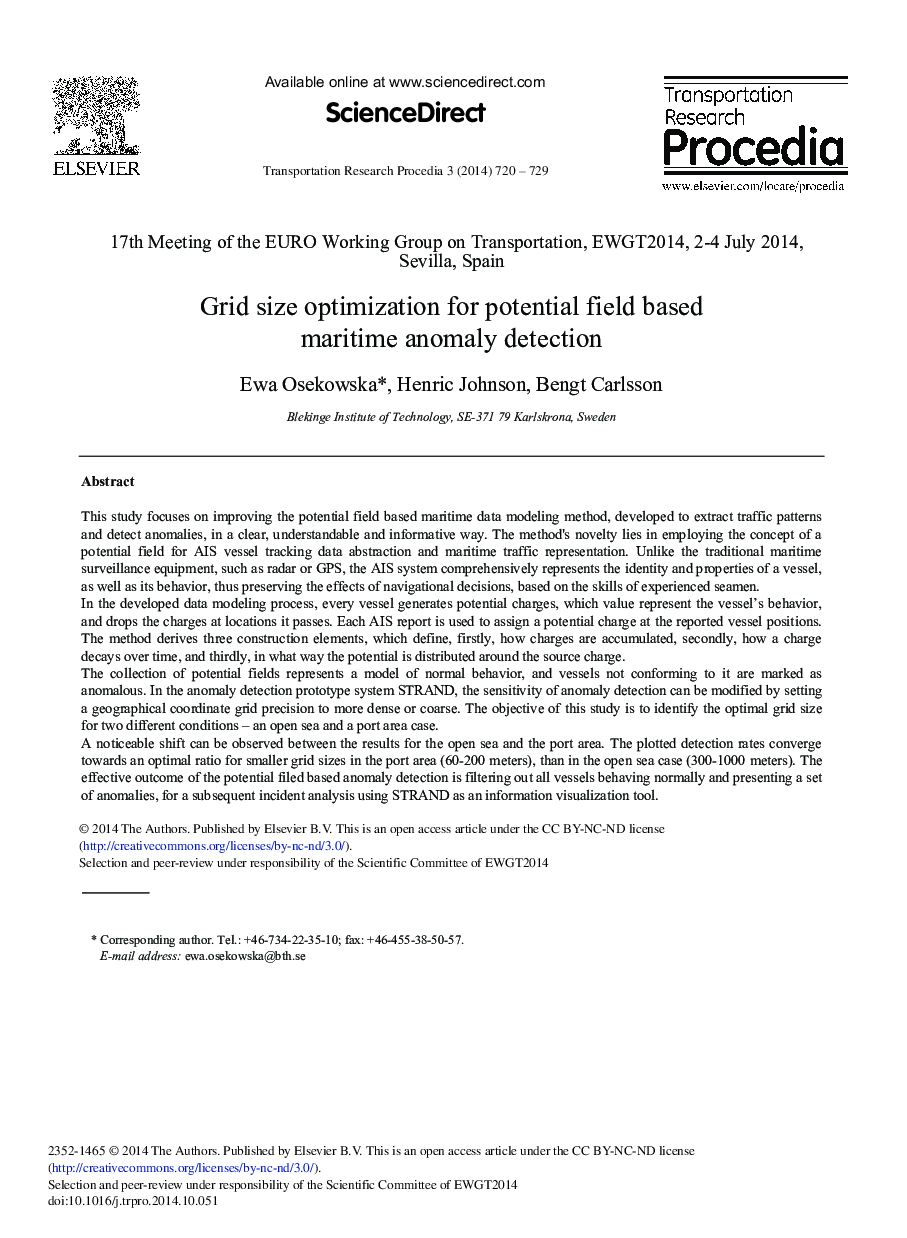| کد مقاله | کد نشریه | سال انتشار | مقاله انگلیسی | نسخه تمام متن |
|---|---|---|---|---|
| 1106452 | 1488292 | 2014 | 10 صفحه PDF | دانلود رایگان |
This study focuses on improving the potential field based maritime data modeling method, developed to extract traffic patterns and detect anomalies, in a clear, understandable and informative way. The method's novelty lies in employing the concept of a potential field for AIS vessel tracking data abstraction and maritime traffic representation. Unlike the traditional maritime surveillance equipment, such as radar or GPS, the AIS system comprehensively represents the identity and properties of a vessel, as well as its behavior, thus preserving the effects of navigational decisions, based on the skills of experienced seamen.In the developed data modeling process, every vessel generates potential charges, which value represent the vessel's behavior, and drops the charges at locations it passes. Each AIS report is used to assign a potential charge at the reported vessel positions. The method derives three construction elements, which define, firstly, how charges are accumulated, secondly, how a charge decays over time, and thirdly, in what way the potential is distributed around the source charge.The collection of potential fields represents a model of normal behavior, and vessels not conforming to it are marked as anomalous. In the anomaly detection prototype system STRAND, the sensitivity of anomaly detection can be modified by setting a geographical coordinate grid precision to more dense or coarse. The objective of this study is to identify the optimal grid size for two different conditions – an open sea and a port area case.A noticeable shift can be observed between the results for the open sea and the port area. The plotted detection rates converge towards an optimal ratio for smaller grid sizes in the port area (60-200 meters), than in the open sea case (300-1000 meters). The effective outcome of the potential filed based anomaly detection is filtering out all vessels behaving normally and presenting a set of anomalies, for a subsequent incident analysis using STRAND as an information visualization tool.
Journal: Transportation Research Procedia - Volume 3, 2014, Pages 720-729
